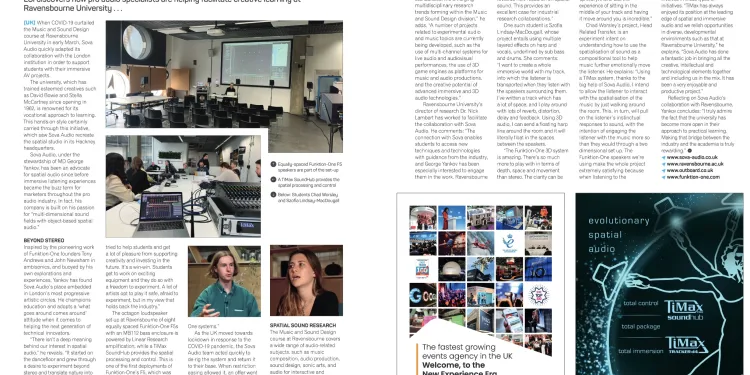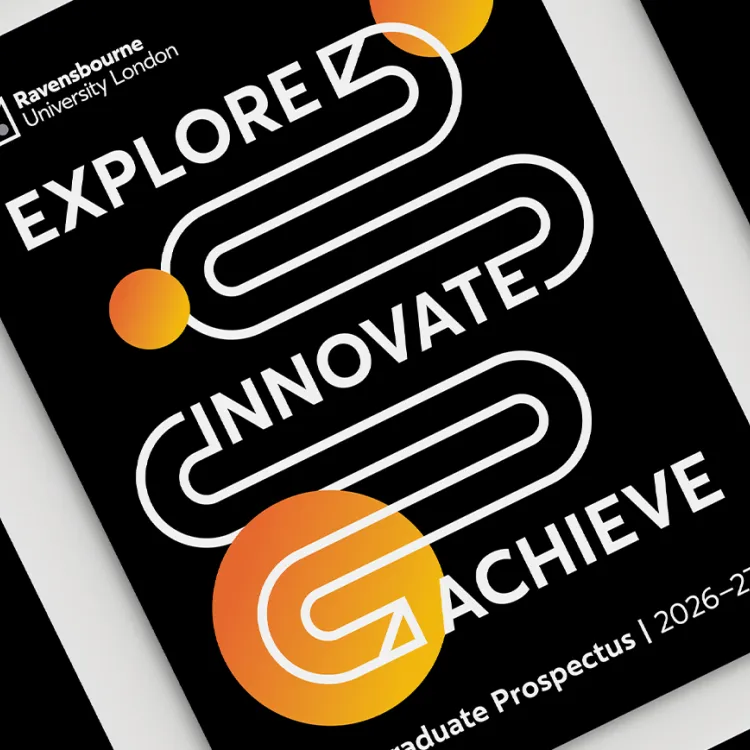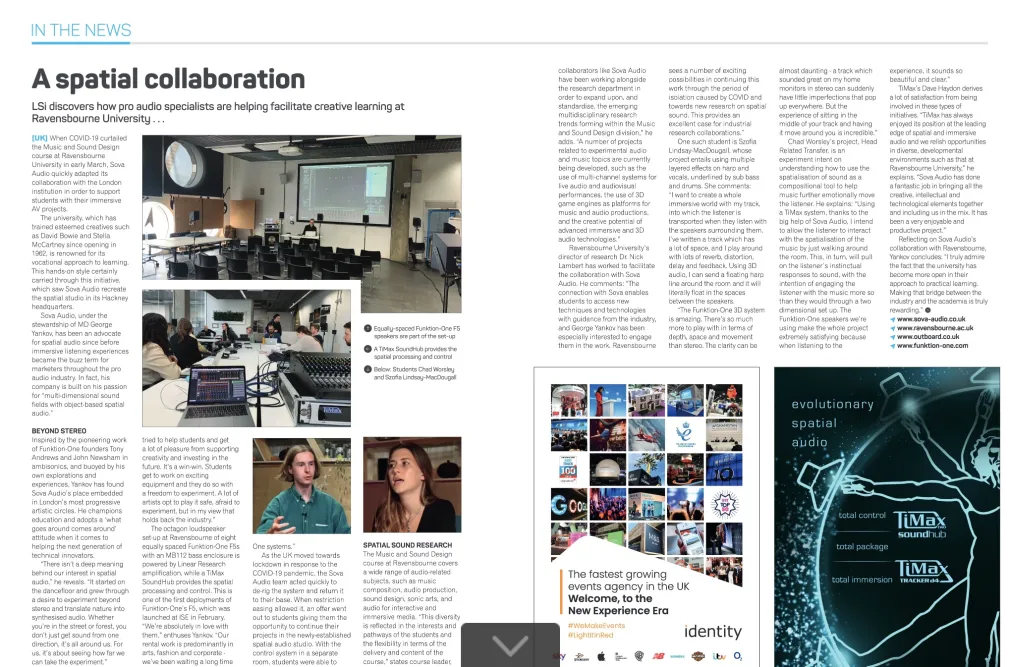Ravensbourne students featured in the specialist technology magazine, LSi

Students Szofia Lindsay-MacDougall and Chad Worsley from the BA (Hons) Music and Sound Design course have had their pioneering work with 3D audio performance included in LSi magazine thanks to a collaboration with Sova Audio and Funktion One.
LSi, which stands for Light and Sound International, is a highly regarded monthly technology magazine that covers a broad range of entertainment services. The magazine profiles the professionals that bring theatre, concerts, festivals and presentations to life.
Ravensbourne’s Director of Research, Dr. Nick Lambert, has helped to lead the initiative for the partnership which has granted students access to new technologies, allowing them to research spatial sound further. The collaboration has supported students with their AV projects in light of the Covid-19 pandemic and has garnered much positive feedback in the process.
Szofia Lindsay-MacDougall uses multi-layered effects which aim to transport people to a new immersive audio experience. When discussing being able to collaborate and use the new technologies, Szofia says, “Using 3D audio, I can send a floating harp line around the room and it will literally float in the spaces between speakers.” She found that the new systems provided a greater amount of depth, space and movement than the average stereo system which is commonly used. “The clarity can be almost daunting – a track which sounded great on my home monitors in stereo can suddenly have little imperfections that pop up everywhere”. Szofia adds that, “the experience of sitting in the middle of your track and having it move around you is incredible.”
Chad Worsley has been utilising the TiMax system for his project ‘Head Related Transfer’. He has been experimenting with how spatialisation of sound can be an interactive experience and can help music to emotionally connect with the listener. Chad comments, “this will pull the listener’s instinctual responses to sound, with the intention of engaging the listener with the music more than they would through a two dimensional set up.”
By having access to new technologies through the partnership, this has allowed students to use resources which may not have been available during lockdown. “The Funktion-One speakers we’re using make the whole project extremely satisfying because when listening to the experience, it sounds so beautiful and clear”, adds Chad. TiMax’s Dave Haydon speaks about the company’s involvement with the collaboration by saying “TiMax has always enjoyed its position at the leading edge of spatial and immersive audio and we relish opportunities in diverse, developmental environments such as that at Ravensbourne University”.
Course leader for Music and Sound Design at Ravensbourne, Christos Manolas, explains that the research department have been working to “expand upon, and standardise, the emerging multidisciplinary research trends forming within the Music and Sound Design division”. Christos goes on to say that there are a number of projects to which experimental audio is helping to further develop. This includes “the use of multi-channel systems for live audio and audio-visual performances, the use of 3D game engines as platforms for music and audio productions and the creative potential of advanced immersive and 3D audio technologies.”
It is an amazing accomplishment for both Chad and Szofia to be featured in LSi Magazine for their explorative AV projects and we wish them all the best for the rest of their studies.

